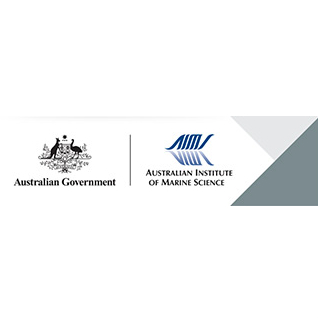Brief description
Temporal variation in a range of coral bioindicators was examined for 2 years on a coastal coral reef of the Great Barrier Reef. Coral and water samples were collected in June, September and October 2005 (Year 1, Dry Season); February, March and April 2006 (Year 1, Wet Season); July, September and October 2006 (Year 2, Dry Season); and March, April and May 2007 (Year 2, Wet Season) at each of the 3 locations (Horseshoe Bay, Davies and Broadhurst Reefs. Loggers measured turbidity (nephelometric turbidity units, NTU) and benthic irradiance (photosynthetically active radiation, PAR, 400-700 nm) every 10 min (comprising 20 measurements integrated over 10 s). Surface water was sampled at each of 2 sites within each location during each sampling event to measure chlorophyll a, phaeophytin, particulate nitrogen (PN), particulate phosphorus (PP), particulate organic carbon (POC), dissolved inorganic nitrogen (DIN), dissolved inorganic phosphorus (DIP), dissolved organic nutrients (DON and DOP) and total suspended solids (TSS). A water quality index (WQI, derived from the sum of z-score transformations for the water column nutrient variables) was calculated for each season using sites and sampling events as replicates. Apical branches (~6 cm long) of Pocillopora damicornis were collected from the centre of each of 6 colonies during each sampling event. Physiological parameters analysed included determinations of symbiont density (from 8 replicate counts), chlorophyll a and skeletal density (determined as the ratio between dry weight and buoyant weight). Sea surface temperature (SST), surface irradiance (µmol photons m-² s-1) and wind speed (m s-1), all recorded at half-hour intervals, were obtained from automatic weather stations (AWS) operated by the Australian Institute of Marine Science in Cleveland Bay and Davies Reef. From this weather data, mean SST, mean total daily surface irradiance (¿mol photons m-² day-1) and mean wind speed (m s-1) were calculated for the 14 days preceding each sampling event. Mean wind speed from Cleveland Bay was used to provide an indication of the effects of wave height, and hence resuspension of sediments. Total monthly rainfall from May 2005 to May 2007 for the Townsville region was obtained from the Bureau of Meteorology. This research aimed to quantify temporal changes in environmental parameters and develop potential stress thresholds for turbidity and test the hypothesis that variations in environmental conditions can be measured as a response in coral bioindicators. To investigate the significance of the relationships between bioindicators and environmental parameters and assess their specificity to changes in water quality. This research project was jointly funded by the Catchmentto-Reef Cooperative Research Centre (a supplementary program to the Cooperative Research Centre of the Great Barrier Reef World Heritage Area -‘‘CRC Reef’’, and the Rainforest CRC), and the Australian Institute of Marine Science. We thank Glenn De’ath for help with the statistical analyses, Michelle Skuza and Margaret Wright for processing the nutrient and chlorophyll samples. The manuscript was improved by constructive comments from Jon Brodie and the anonymous reviewers. The satellite image was gratefully provided by Ken Rohde (Department of Natural Resources and Water, Queensland).Lineage
Maintenance and Update Frequency: asNeededNotes
CreditCooper, Timothy F, Dr (Principal Investigator)
Modified: 23 06 2025
text: westlimit=146.83; southlimit=-19.2; eastlimit=147.1; northlimit=-18.8
Cooper TF, Ridd PV, Ulstrup KE, Humphrey CA, Slivkoff MM and Fabricius KE (2008) Temporal dynamics in coral bioindicators for water quality on coastal coral reefs of the Great Barrier Reef. Marine and Freshwater Research. 59: 703-716.
local : 11068/7819
- global : e027f79b-759f-40c0-9db7-e3b74fcf152f


